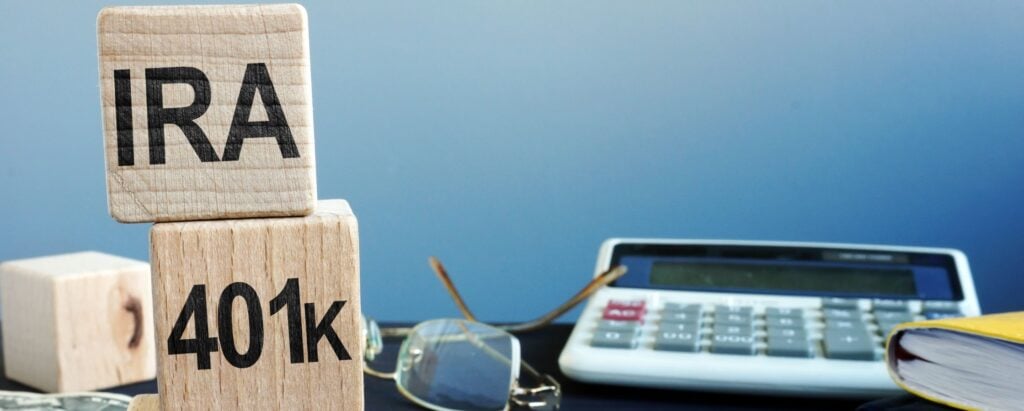Disclosure: This post may contain affiliate links. If you click on a link I may make a small commission at no extra cost to you. You can read the full disclosure here.
Last Updated on January 30, 2024 by Alex
Are you starting your journey towards a worry-free retirement? You’re probably wondering how to plan for retirement? Look no further. This guide is your roadmap to financial success in your old age.
Discover essential strategies, from maximizing savings to navigating investment options, tailored for a prosperous retirement. Learn how meticulous retirement planning today ensures a comfortable and fulfilling tomorrow.
Whether you’re just starting or fine-tuning your approach, this article unveils the keys to a robust retirement plan, promising financial security, peace of mind, and the freedom to savor the golden years.
What is Retirement Planning?

Retirement planning is the process of determining how much money you’ll need to live comfortably in retirement and creating a strategy to achieve that goal. It involves setting financial goals, estimating future expenses, and developing a savings and investment plan to ensure a secure and comfortable retirement.
It’s important to start retirement planning early to take advantage of the power of compounding and give your investments time to grow. Consulting with financial professionals or advisors can also provide valuable guidance in creating a comprehensive retirement plan tailored to your individual needs and circumstances.
How to Calculate How Much Money You Need to Retire?

Calculating how much money you need to retire involves considering various factors such as your expected living expenses, the age at which you plan to retire, life expectancy, inflation, and potential sources of income. Here’s a step-by-step guide to help you estimate your retirement savings goal.
Determine Retirement Age
Decide at what age you plan to retire. This will impact the number of years your retirement savings need to last.
For example, if you’re hoping for early retirement, you’ll need to start saving earlier.
Estimate Retirement Expenses
Identify your expected annual living costs during retirement. Consider costs such as housing, healthcare, food, transportation, insurance, taxes, and discretionary spending (travel, hobbies, etc.).
Account for inflation when projecting future expenses. Inflation erodes purchasing power over time, so it’s essential to factor in rising costs.
Calculate Total Retirement Expenses
Multiply your estimated annual expenses by the number of years you expect to be in retirement. This will give you a rough estimate of your total retirement expenses.
Deduct Expected Income
Consider all potential sources of retirement income, such as Social Security retirement benefits, pensions, annuities, and part-time work.
Subtract this expected income from your total retirement expenses to determine the gap that needs to be filled by your savings.
Use a Retirement Calculator
Take advantage of online retirement calculators, which can help you run different scenarios and fine-tune your savings goal based on various factors.
Account for Contingencies
Build in a buffer for unexpected expenses or emergencies. Having a financial cushion can help you navigate unforeseen circumstances without jeopardizing your retirement savings.
Review and Update Regularly
Periodically review and update your retirement plan. Changes in your life circumstances, such as marriage, the birth of children, or changes in income, may warrant adjustments to your retirement savings goal.
How to Plan Your Retirement in 4 Steps

Planning your retirement involves several steps to ensure financial security and a comfortable lifestyle during your non-working years. Here’s a simplified guide to help you plan your retirement in four key steps.
Create a Plan
Creating a retirement plan involves a detailed analysis of your financial situation, goals, and strategies to achieve those goals.
You should start by assessing your current financial situation. Next, define your retirement goals. This should include the age you hope to retire and what lifestyle you hope to maintain once retired.
You can now start planning your retirement. Consider your retirement expenses, income, savings gap, and choose retirement accounts.
Once your plan is underway make sure to contribute regularly to your retirement accounts, build an emergency fund, regularly review your retirement plan, and be prepared to adjust as needed.
Finally, it’s recommended to seek professional advice to ensure your plan aligns with your goals and to receive guidance on investment advice strategies and tax planning.
Establish the Amount You Will Set Aside Each Month
Determining the amount to set aside each month for retirement involves a careful assessment of your financial situation, goals, and the time remaining until retirement.
Creating a detailed budget will help you identify how much you can save for retirement each month. You should include all income and expenses. Once you’ve created your budget, then you can identify expenses that could be cut and potentially reallocate extra money to your retirement fund.
When choosing how much to save each month towards retirement you need to factor in your expected retirement expenses, inflation, and how long until you retire.
The closer you are to your retirement age, the more you’ll need to contribute to reach your retirement savings goal.
If you find it challenging to determine the appropriate amount to set aside each month, consider consulting with a financial advisor. They can provide personalized guidance based on your specific situation and help you develop a retirement savings strategy aligned with your goals and risk tolerance.
Choose Your Savings Account and Retirement Plan
Selecting the right savings account and retirement plan involves considering your financial goals, risk tolerance, and time horizon. Here are common options for both savings accounts and retirement plans:
Savings Account:
- High-Yield Savings Account
- Certificates of Deposit (CDs)
- Money Market Account
Retirement Plans:
- 401(k)
- IRA (Individual Retirement Account)
- Roth 401(k)
- SEP IRA (Simplified Employee Pension)
- Solo 401(k)
When choosing how to save for retirement consider your risk tolerance, taxes, employer contributions, liquidity needs, and contribution limits.
Before making any decisions, it’s advisable to consult with a financial planner who can provide personalized guidance based on your individual financial situation and goals.
Make Adjustments
Consistent financial health requires a proactive approach. Begin by regularly reviewing your short and long-term goals, factoring in life events like marriage or career shifts. Assess your budget to identify areas for spending adjustments and allocate extra funds to savings or debt reduction.
Adjust your savings contributions based on changes in income, using additional earnings for increased financial security.
Reassess retirement goals and adjust plans accordingly, considering changes in health care, lifestyle, or travel aspirations. Regularly evaluate investment performance, rebalance portfolios, and stay informed about market conditions. Boost your emergency fund to cover unforeseen expenses and periodically review retirement accounts for optimal performance.
Stay on track with professional advice, keeping insurance coverage up-to-date. Maintain financial agility through regular check-ins and adjustments to align your plan with evolving goals and economic shifts.
Remember, financial planning is an ongoing process, and making proactive adjustments can help you stay on track to meet your financial objectives. Periodically reassessing and adapting your plan to changing circumstances is crucial for long-term success.
Different Retirement Plan Types

There are several types of retirement plans, each with its own features, eligibility criteria, and tax advantages. The choice of a retirement plan depends on factors such as your employment status, income level, and preferences. Here are some common types of retirement plans.
Individual Retirement Account (IRA)
Contributions to Individual Retirement Account are often tax-deductible, and earnings grow tax-deferred until withdrawal. Taxes are paid upon withdrawal in retirement.
Roth IRA
Contributions to a Roth IRA are made with after-tax dollars, but qualified withdrawals in retirement are tax-free. No required minimum distributions (RMDs) during the account owner’s lifetime.
SIMPLE Individual Retirement Account
The SIMPLE IRA is designed for small businesses with 100 or fewer employees. Allows both employers and employees to make contributions, with less administrative complexity than a 401(k).
Employer-Sponsored Plan (401k)
A 401k is commonly offered by private-sector employers. Allows employees to contribute a portion of their salary on a pre-tax basis, and contributions may be matched by the employer. Contributions and earnings grow tax-deferred until withdrawal.
FAQs
What Is the Best Way To Invest for Retirement?
The best way to invest for retirement depends on various factors, including your financial goals, risk tolerance, time horizon, and individual circumstances. It’s recommended to start retirement saving early, build a diverse portfolio, consider your risk tolerance, and use tax-advantaged accounts.
Making regular contributions, reviewing your plan often, and seeking professional advice from a financial advisor are all steps you should take when investing for retirement.
What Is a Good Retirement Income?
Determining what constitutes a “good” retirement income is highly subjective and depends on individual factors such as lifestyle, location, health, and other personal information. What may be considered sufficient for one person may not be the same for another. However, financial experts often use a common rule of thumb known as the “replacement ratio” to estimate retirement income needs.
The replacement ratio is a percentage of your pre-retirement income that you aim to replace in retirement. A common guideline suggests aiming for a replacement ratio of 70-80%, meaning your retirement income should be 70-80% of your pre-retirement income.
Why Is Retirement Planning Important?
Retirement planning is essential for achieving financial security, maintaining your lifestyle, and adapting to the challenges and opportunities that may arise during your retirement years. It’s a proactive approach that helps you take control of your financial future and enjoy a fulfilling retirement.







